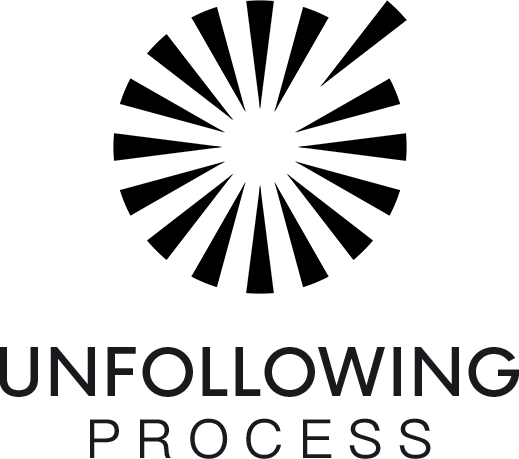
The Invisible Boardroom Running Your Mind
Every leader has an Inner Board — the mix of voices that shape every big decision. In Parts Play, our non-therapeutic approach to working with your parts, you learn to meet that board and choose who leads. It shares roots with IFS Therapy and Parts Therapy, but it’s built for everyday leadership in real-world moments. Here’s how two founders used it to turn chaos into clarity.
The decision had been clear for months, but David couldn't pull the trigger.
His co-founder and CTO—his best friend from college—had to go.
The company had grown beyond what either of them imagined five years ago. But somewhere along the way, his co-founder stopped growing with it. The technical debt was mounting. Key engineers were frustrated. Two had already quit.
David sat in his car outside the office for twenty minutes, knowing he had to have the conversation that would likely end their partnership and maybe their friendship too.
But every time he reached for the door handle, the voices started:
You're betraying him. He built this with you. The team is counting on you to fix this. What if you're wrong? What if he can change? You're being weak. A real CEO would have handled this months ago.
David had been wrestling with this decision for eight months. Not because he didn’t know what needed to happen. But because his inner boardroom was in chaos. Every voice was shouting over the others. None of them were actually leading.
The Loyalist wanted to protect the friendship.
The Overthinker kept searching for a solution that hurt no one.
The Pleaser was afraid of how the team would react.
The Self-Critic was furious he let it get this bad.
And beneath all of them sat something quieter. Not a part, but a deeper knowing. The part of him that actually saw the full picture. The one that could hold the weight of the relationship and the needs of the business at the same time.
His True Nature.
But that voice had been drowned out for a long time.
Most leadership development focuses on what people can see.
Strategy. Execution. Communication. Results. Leaders are trained in the same decision sciences, read the same books, follow the same scripts.
We call this the Outer Game. It’s visible. Trackable. Measurable.
But there’s another game playing just beneath the surface. One that’s harder to teach and even harder to lead without.
The Inner Game.
It’s the voice that either speaks or stays silent when you’re about to lay off 30 percent of your team. The presence you feel when an investor backs out at the last second. The part of you that either buckles or finds clarity when the company is three weeks from running out of cash.
Most leaders are trained to read the market, but not their own mind.
And when the stakes are high, the real decision often comes from inside.

This is where the concept of your Inner Board comes in.
Just like a company has a board of directors with different perspectives, you have an Inner Board made up of internal voices. Each one trying to guide you, protect you, or prove something through you.
The difference is, most people have never met theirs.
They just let the loudest voice take control.
In our Parts Play approach, meeting your Inner Board is like opening the door to the parts work roots found in IFS Therapy and Parts Therapy — but in a way built for daily leadership, not treatment.
Elena learned this the hard way.
Her startup had burned through 18 months of runway in 12. A key partnership fell through. Her lead engineer had just quit.
She had three weeks to raise emergency funding or start shutting down.
"I was pitching nonstop," she said. "But every 'no' felt personal. Every question felt like an attack. I was guarding."
She started working with Space for Work and realized her Inner Board wasn’t leading. It was at war.
Her Prover wanted to push harder, show everyone she could pull it off.
Her Perfectionist thought the deck still wasn’t good enough.
Her Critic kept looping self-blame and worst-case scenarios.
Her Pleaser kept shifting the message to whatever she thought investors wanted to hear.
"I wasn’t leading the fundraise," she said. "I was just sending whichever part of me showed up to the meeting."
No wonder investors were passing.
The breakthrough came at 2 a.m. on a Tuesday.
Elena was in her kitchen, stress-eating leftover Chinese food, when she pulled out the cards that represented her Inner Board.
She laid out every voice she’d been hearing. Then she found one she’d been ignoring.
The Visionary.
Not the Prover. Not the Perfectionist. The part that started the company. The one that remembered why it mattered.
"When I connected with that part, everything shifted. I remembered what we were building. Not because I needed to prove anything, but because it was worth building."
She rewrote the pitch deck one more time. But this time, it came from clarity, not panic.
In the next three investor meetings, she wasn’t trying to impress anyone. She spoke from purpose. From the voice she chose to lead.
Two of those investors led her Series A three weeks later.
David’s shift took longer. But it followed the same arc.
After sitting in the parking lot for the fourth time in two weeks, he admitted he needed help.
He started using Space for Work to meet the parts of him that had been running the show.
He let the Loyalist speak. This feels like betrayal.
He let the Perfectionist speak. There has to be a version where no one gets hurt.
He let the Pleaser speak. The team will think you’re ruthless.
Then he returned to his True Nature. Not a part with an agenda. Just the one who could listen to all of them and still see what mattered most.
“It didn’t feel cruel,” David said. “It was actually more loving than avoiding the conversation. Because avoiding it was hurting everyone—including him.”
The conversation was still hard. His co-founder was hurt. Angry. But it wasn’t catastrophic.
Because David wasn’t speaking from guilt. Or fear. Or performance.
He was leading.
Six months later, his co-founder called him and said thank you. He’d been struggling too. He just hadn’t known how to say it. The conversation freed them both.
This is what it means to lead from the inside out.
It’s not about becoming someone else. It’s about getting clear on which part of you is making the call, especially when everything’s on the line. It’s about claiming the CEO seat.
Your Loyalist might be the reason your team trusts you—but might also stop you from making the hard call.
Your Prover might be great in a crisis—but miss the bigger opportunity for patience and timing.
Your Pleaser might build harmony—but freeze when someone needs to be held accountable.
None of these parts are bad. But when any one of them is always in charge, you’re only leading with a fraction of yourself.
And when you’re deciding whether to pivot the company, shut down a division, or fire your best friend, you need your full self in the room. Not just the loudest voice.
Even in the quieter moments, that kind of clarity matters.
Building your Inner Board isn’t complicated. But it does take space. It takes a willingness to slow down, listen, and choose your leader from within.
That’s the edge.
As AI takes over more of the outer game, the most clutch leaders will be the ones who’ve trained for the inner one.
The ones who’ve learned to lead not just from skill, but from self.
This is the heart of Parts Play: a non-therapeutic method with the same core idea found in IFS Therapy and Parts Therapy — learning to work with your own parts so you can lead with your whole self.
Two years later, David’s company was acquired for eight figures.
Elena’s startup became one of the fastest-growing SaaS companies in their category.
Neither of them became someone new.
They just stopped letting fear or performance or noise run the show.
They learned to lead from the inside out.
And suddenly, the outer game wasn’t just more effective.
It was sustainable.
Because they weren’t performing anymore.
They were leading with their whole selves.



Leave a comment
This site is protected by hCaptcha and the hCaptcha Privacy Policy and Terms of Service apply.